The Little Rann of Kutch is located in the Thar desert, a seasonal salt marsh in the Indian state of Gujarat.
Salt is the main industry in the region. Every year for eight months, it is home to more than 100,000 Agariya workers who fan out over the delta and toil in the brutal sun to extract around one million tonnes of salt a year from the floodwaters of the nearby Arabian Sea.
Like so much in the world today, the future of the Agariya people hangs in the balance.
With a future currently under threat from receding groundwater levels and declining market values, the salt pans are likely to disappear without trace, along with a traditional way of life that has been sustained for the past four hundred years.
Burtynsky’s latest series Salt Pans combines fine art and advocacy through his acclaimed aerial perspective to tackle the evidential environmental imprint imposed by the harsh processes of salt industry on the Agariya people and their land.
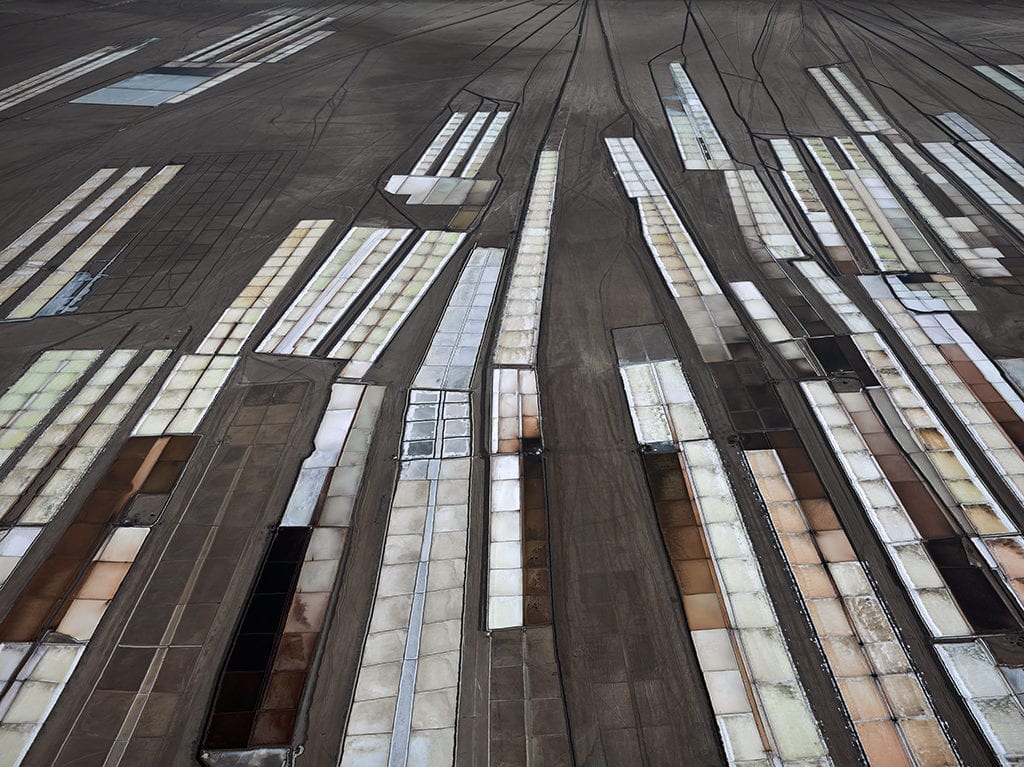
Through their documentation of a disappearing landscape, the photographs are palimpsests, tracing evidence of former pans as they eventually dry out and leave fading scars.
Both formalist and elegiac, the images explore, as Burtynsky sees it, an “ancient method of providing one of the most basic elements of our diet; as primitive industry and as abstract two-dimensional human marks upon the landscape.”
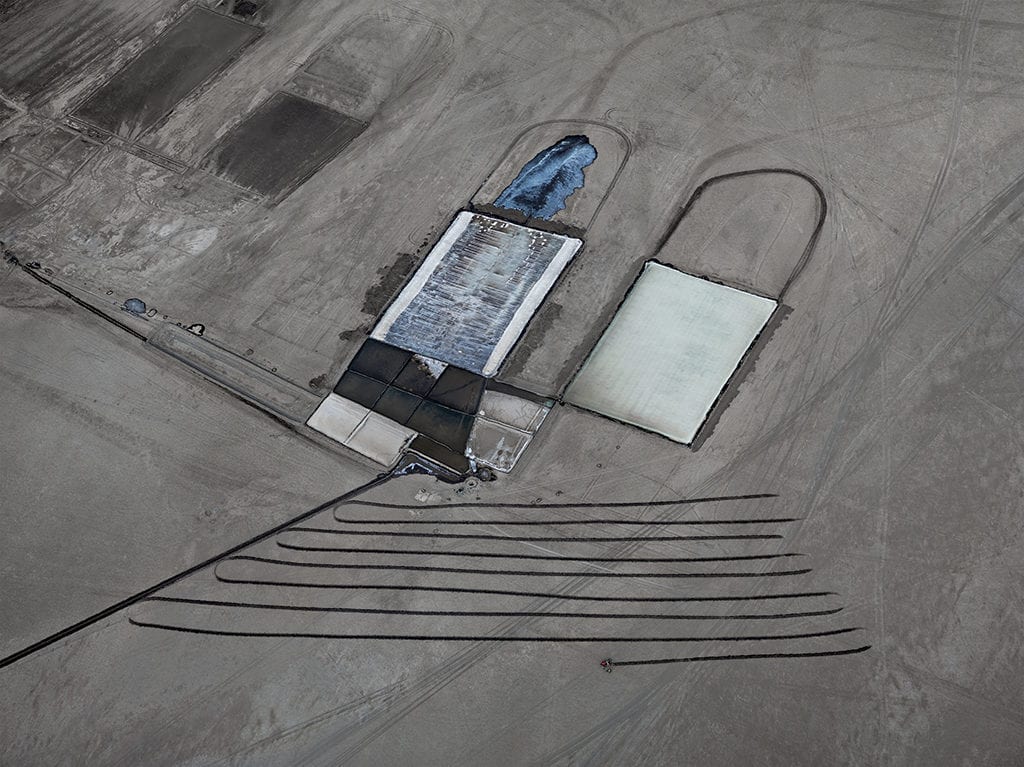
With a dizzying frontal aspect that flattens the grid-like network of wells, pans and vehicle tracks into equally weighted pictorial elements of line, form and space, Burtynsky urges the viewer to dig deeper into each image to unearth their hidden intricacies he has meticulously framed.
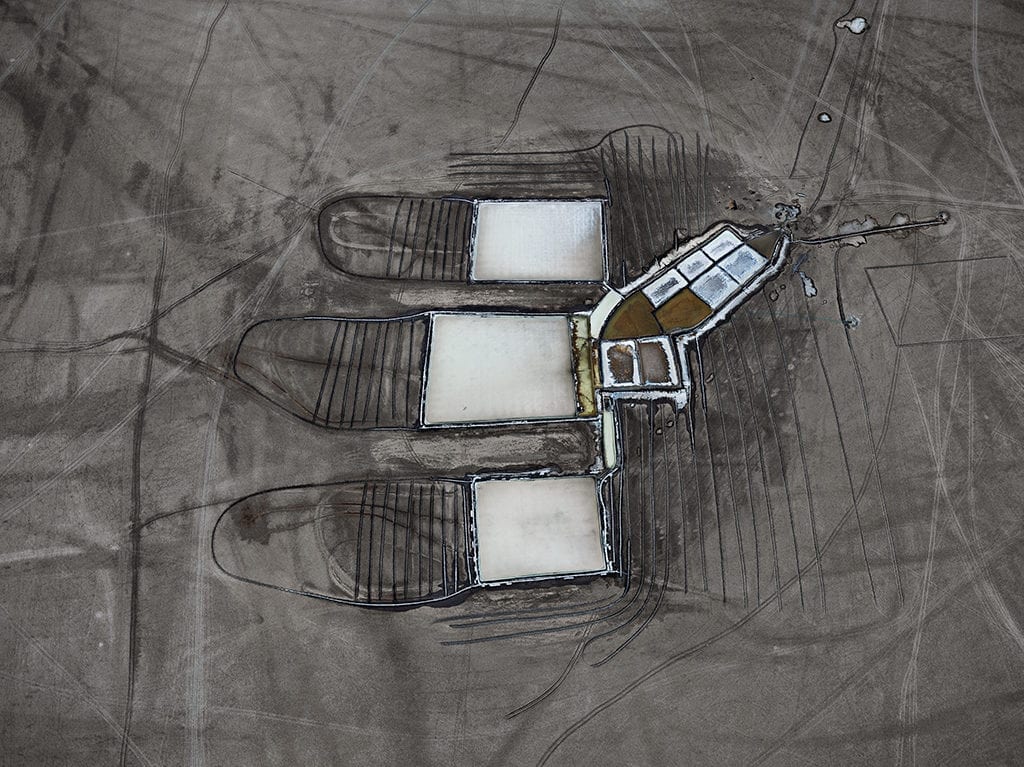
Salt Pans adds to Burtynsky’s prolific compendium of work that takes the insatiable human appetite for the world’s raw materials as its predominant subject.
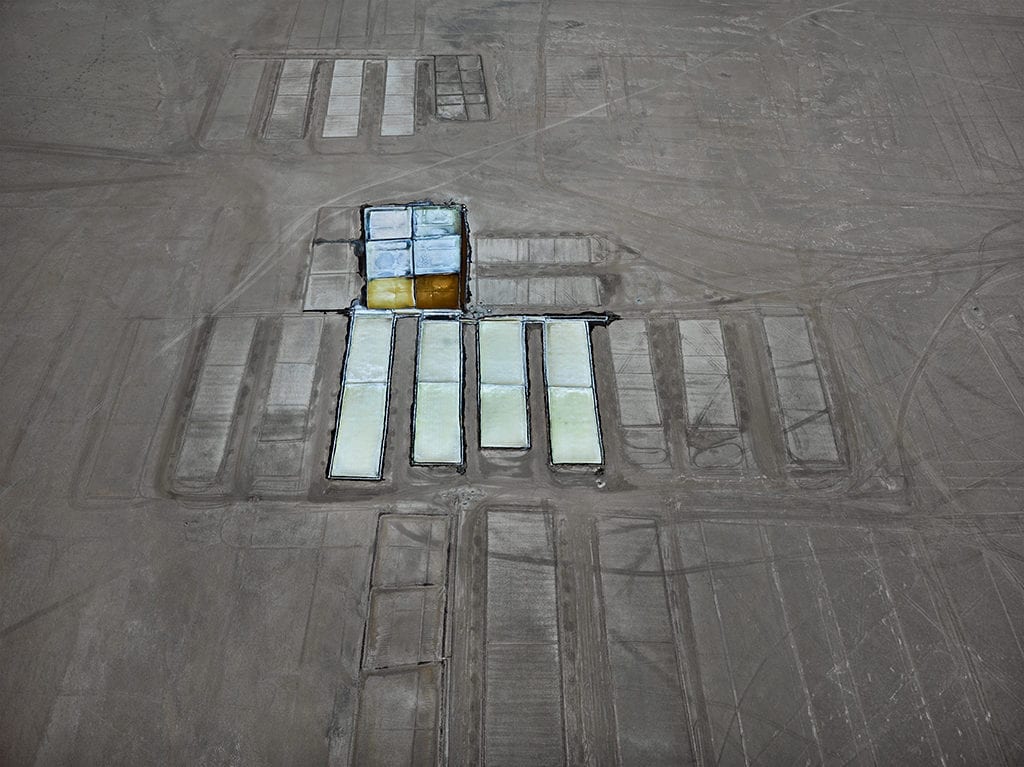
The Canadian photographer, one of the leading landscape photographers of his generation, is best known for his devotion to the dilemma of our modern existence–the impact we as a species are having on the surface of the planet.
His large format photographs visually arrest the viewer, portraying the stark realities of our ravaged Earth. In their topographical scale they hold a disconcerting dialogue between attraction and repulsion, seduction and fear that envelop the eye.
From the coalfields of California, copper mines of Australia, ship breaking scrap yards of Bangladesh and the vast nickel tailing of his home province Ontario, Burtynsky’s oeuvre makes visible the manufactured landscape, taking these often neglected spaces out of the periphery and into the forefront of the public imagination.
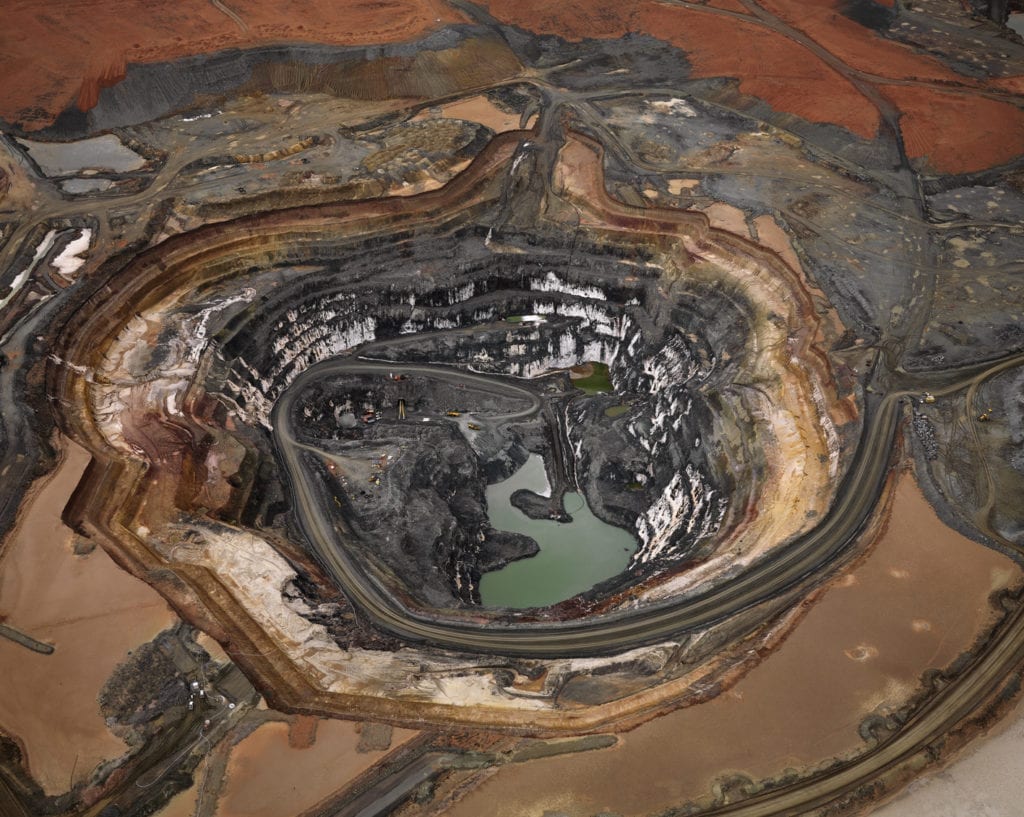
Accompanying Salt Pans in the upper exhibition space at Flowers Gallery is Essential Elements, which pairs some Burtynsky’s most breathtaking and recognisable images with unpublished and never before seen works, weaving an evocative journey through the photographer’s past projects.
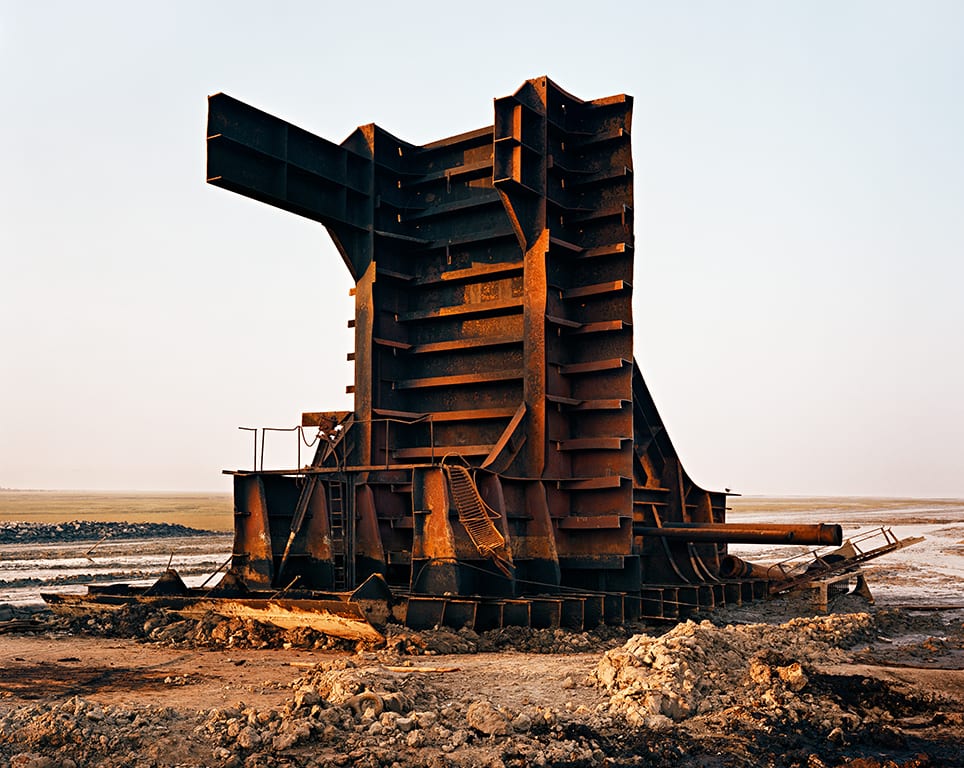
Essential Elements takes a free-flowing approach across geographical borders and over an extended period of time, the exhibition reveals the development of an expansive formal language.
“We wanted to look at Burtynsky’s vocabulary,” says Flowers Gallery’s Director of Photography Chris Littlewood. “Rather than a thematic or chronological survey, the works are grouped together in a way to highlight Burtynsky’s use of photography. Through formal or conceptual connections between pairs of images, the aim is to create a more playful, less rigid overview spanning thirty years of the artist’s visual language.”
“What we admire so much about him is that he keeps coming up with something new” explains Littlewood. “He has been on a trajectory connected through many moments of epiphany’s and realisations, and that’s why we love to show his work.”
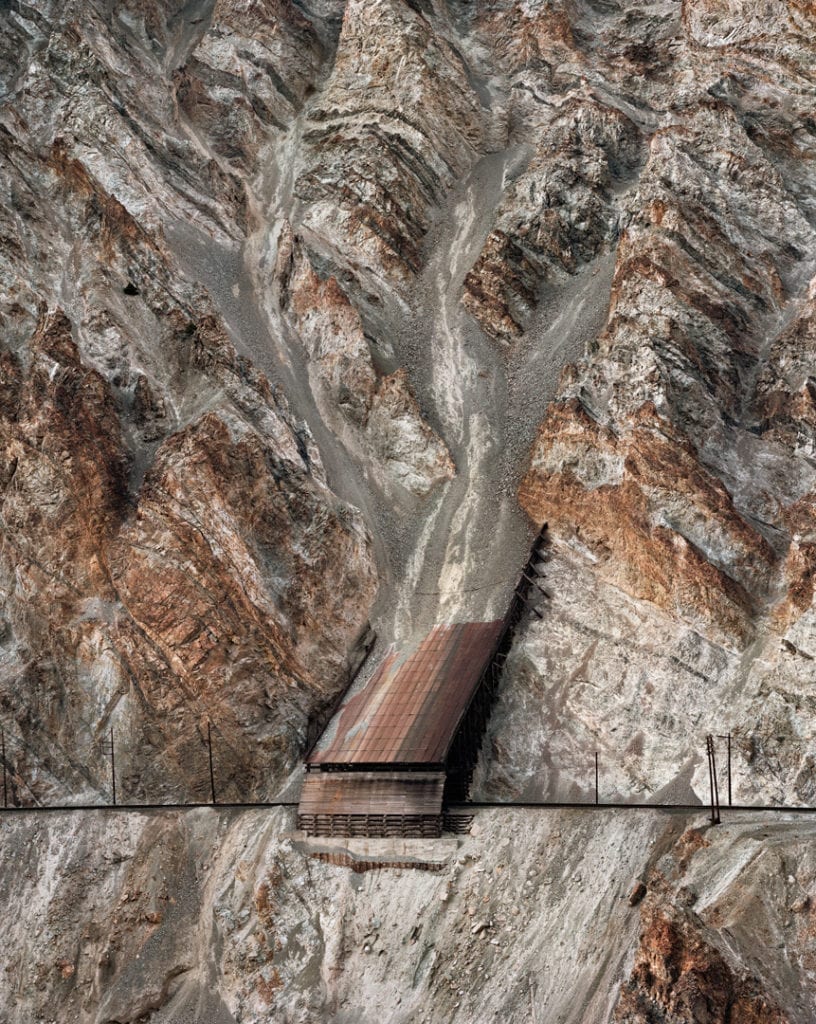
“Our dependence on nature to provide the materials for our consumption and our concern for the health of our planet sets us into an uneasy contradiction” says Burtynsky. “For me, these images function as reflecting pools of our times.”
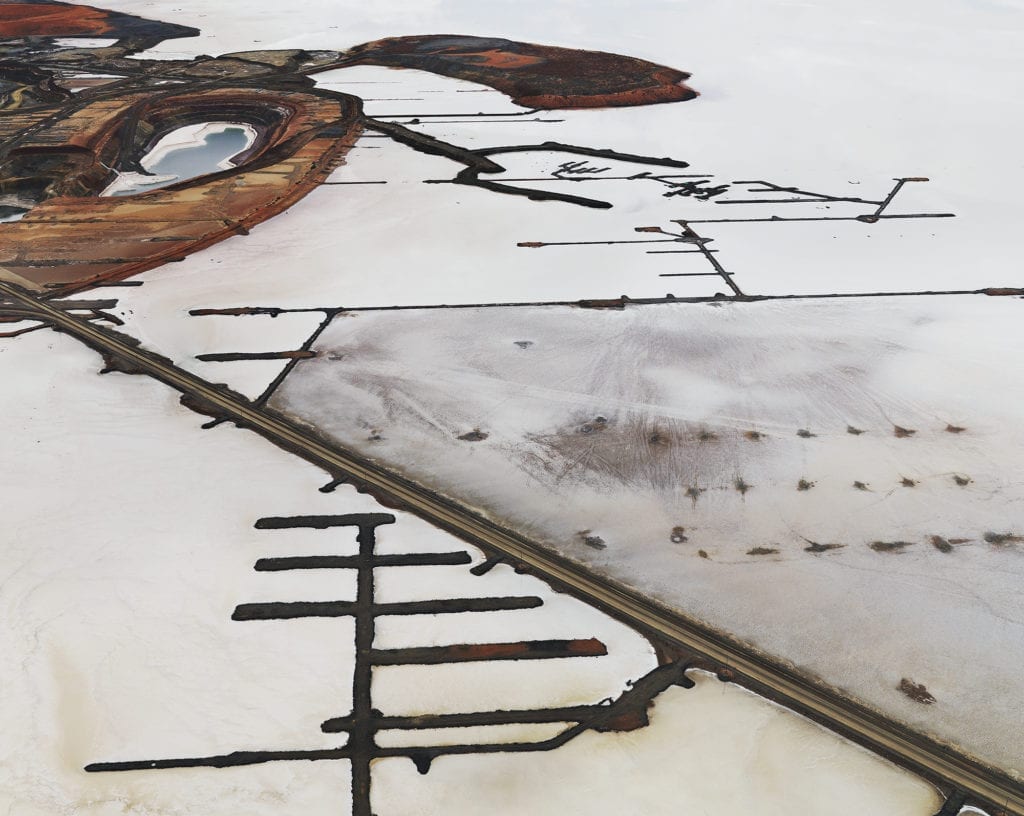
“We come from nature” says Burtynsky. “There is an important to having a certain reverence for what nature is because we are connected to it. If we destroy nature, we destroy ourselves.”
Salt Pans and Essential Elements will be on display at Flowers Gallery, London E2 until 29 October,. A new book Edward Burtynsky: Essential Elements, edited and curated by William A. Ewing is published by Thames & Hudson, £45.00 hardback. More information is available here.
